We had the opportunity to see Nuremberg from the inside and out, top to bottom today! We began our morning with a long uphill walk to the Imperial Castle, where we toured the museum, tower, and water well. Later in the afternoon, we took an accidental beer cellar tour deep under the city.
The Imperial Castle
Nuremberg has one of the most prominent and important castles in all of Germany. It once served as a symbolic capitol for the Holy Roman Empire, a loose collection of Germanic kingdoms claiming to be the spiritual successor to the Roman Empire. We learned a lot about the Empire today. Especially interesting was how the rulers throughout its history blended Christianity with the secular rule of the emperor. For example, one reason to claim the spiritual succession of Rome was because the people believed that the end of Rome meant the end of the world, according to the Bible. The HRE has a vast history that we barely scratched the surface of, but it was very interesting to learn more. Valerie even asked some historical questions, so she must’ve been having a decent time.
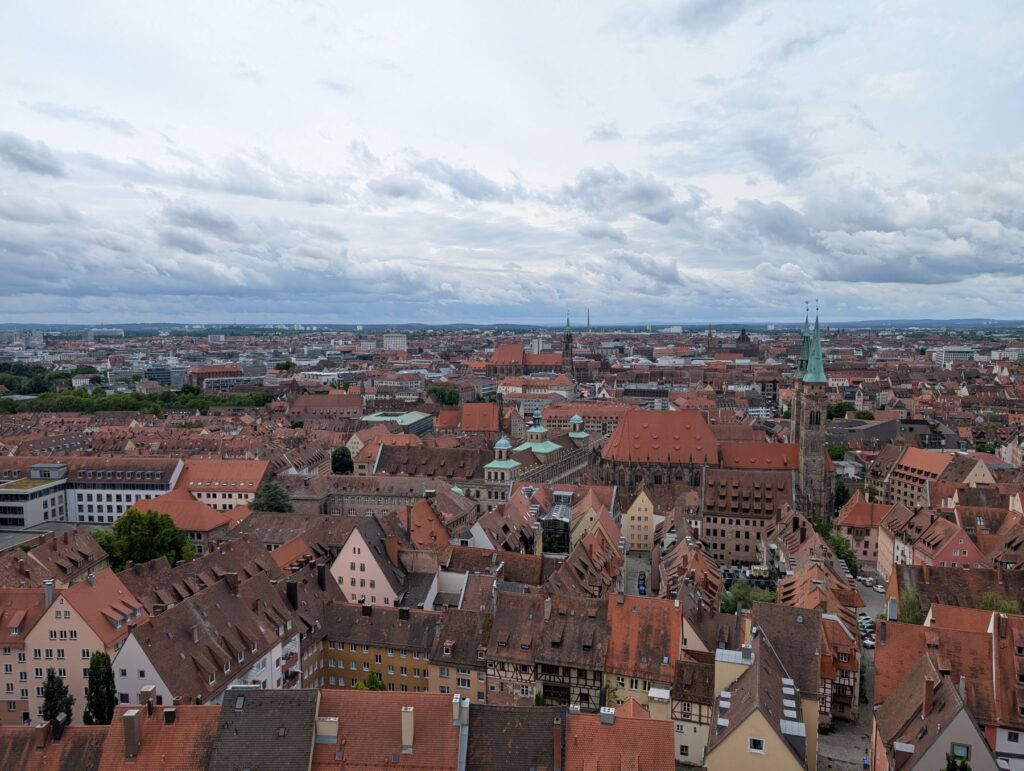
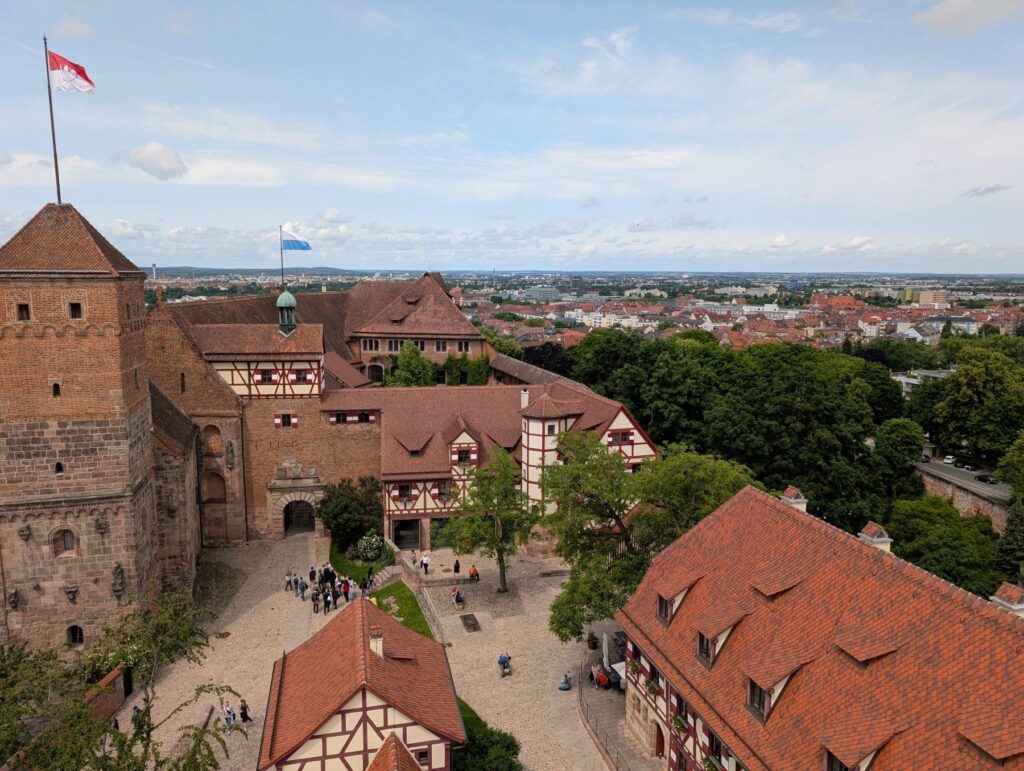
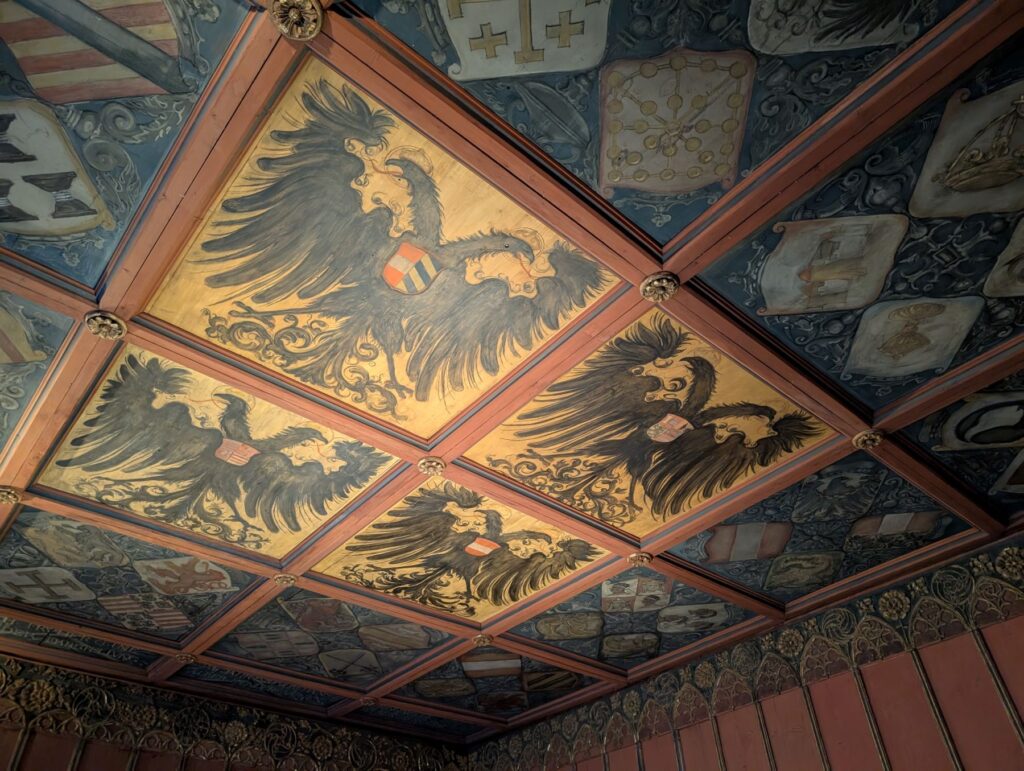
After touring the museum, we climbed the main tower to get a good view of the city. In every city that I’ve seen from above, I’m always shocked that we’re either below, even with, or only just slightly above the church steeples. It’s mind-blowing how massive the cathedrals are, especially when you consider how long ago they were built. Anyways, the tower was a massive spiral staircase, leading to the highest point in the Old City. If you’re wondering, yes, we did drop something from the top of the stairs to the bottom; my hat took about 3 seconds to fall all the way down.
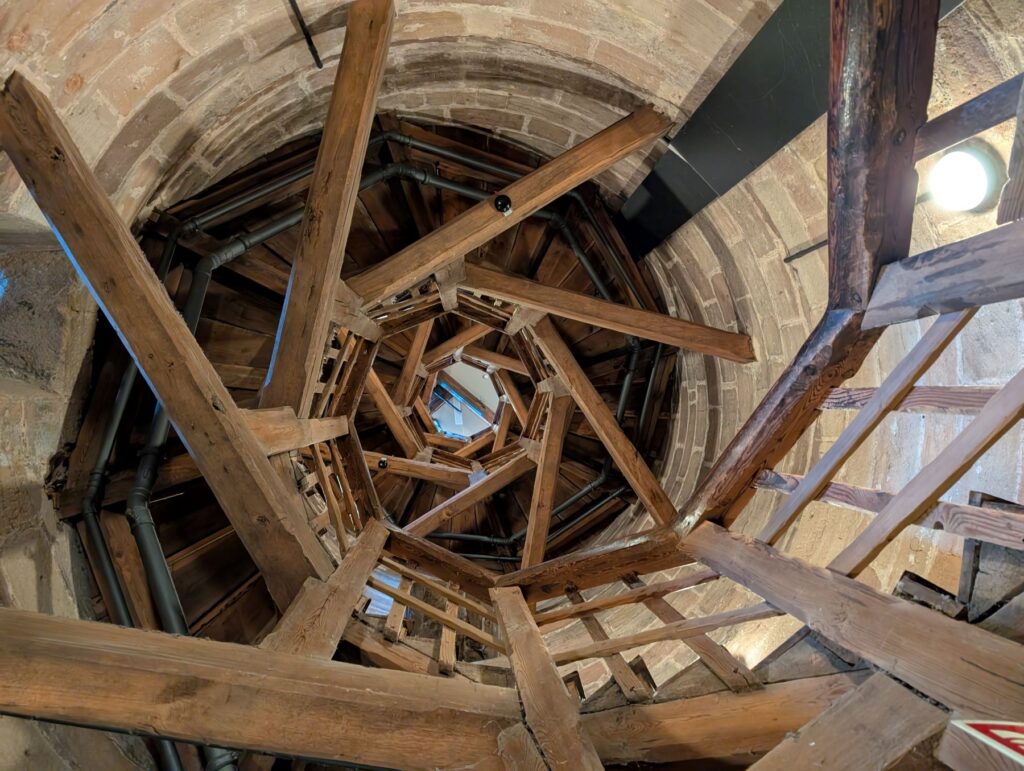
The last stop on the castle tour was the wellhouse. Though most of the tour guide’s explanation was in German, he told us a bit about how water was delivered to the castle residents. The well was the most important part of the castle, so it was built first. Its location and depth were kept secret and the wellhouse was built with nearly 3 foot thick walls to protect it. After all, no society lives long without clean and consistent water. We got a chance to experience the well too. The guide lowered a candle chandelier down to the water level to show us its depth. It didn’t make for a good picture, but seeing the candlelight 150 feet down in a black hole was impressive. He also poured water from a pitch down into the well. We timed it — 4.5 seconds for a splash to be heard. Crazy.
Poutine
We stumbled upon a poutine restaurant between events. I’ve never had it before but it turned out to be delicious. We both opted for German style poutine recipes, Valerie with the dŏner and me with the currywurst. We finished off the meal with fresh-made churros. All was wonderful.
Beer tour
I accidentally booked us for a tour of the beer cellars beneath Nuremberg. I actually meant to book a tour for the Art Bunkers from WWII, but we’ll do that one tomorrow. The beer tour was fascinating! There were three levels of basement that we were able to explore, the oldest being on top.
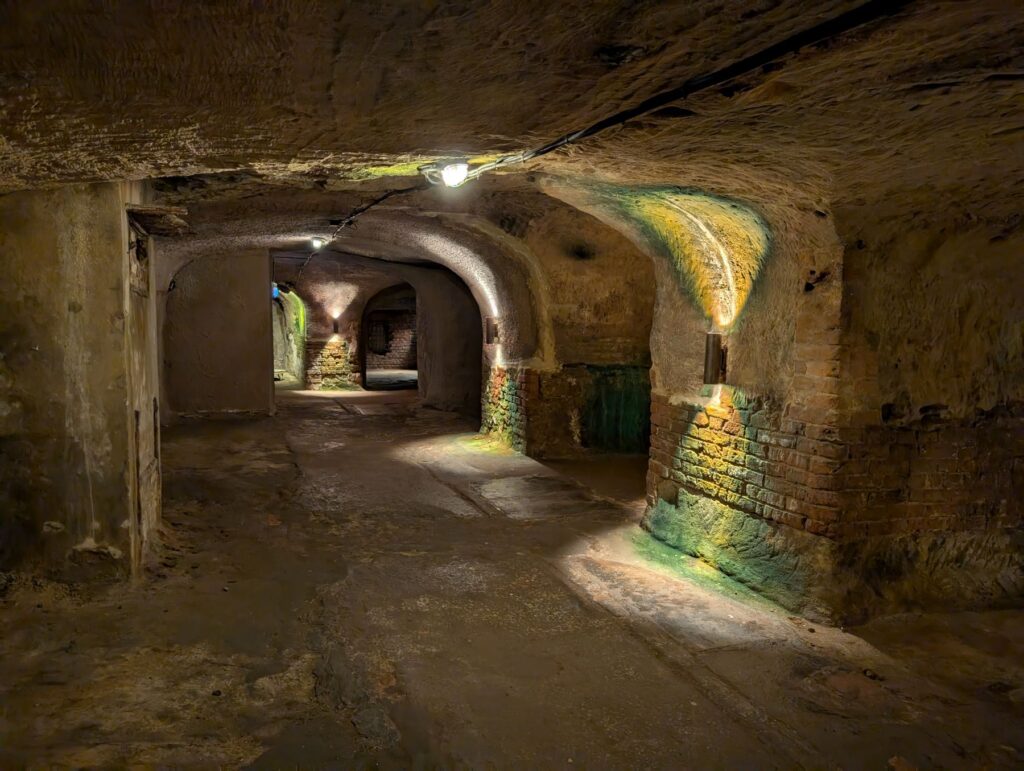
The technology of the cellars was also surprising. The natural ventilation systems created by openings strategically placed where the sun would be allowed for natural circulation. It was still frigid down there. We learned that the relatively consistent temperature made it possible to brew beer year round. During warmer summers, the residents would important ice and fill a massive ice chamber to keep the whole brewing cellar cool. A third interesting piece of technology was the careful production of different alcohols, each with a precise recipe and set of conditions. Although I already knew people of old had plenty of skill and tools, it was surprising to see just how much they thought of over the centuries.
The tunnels extended for miles, connecting all over the entire city. The first cellars were built about 800 years ago. Around 500 years ago, beer was practically the only sanitary drink for the locals to have. As such, each residence was legally required to have a beer cellar. Over time, these became connected for safety reasons. This all conglomerated into a massive tunnel system.
During WWII, further expansions were made to create navigable tunnels that would function as bomb shelters and an exit from the city during Allied raids. This proved useful on January 2, 1945 when Nuremberg was leveled. Thousands died, but thousands more survived in the tunnels. When the people emerged, little remained. Even the castle had been destroyed. In the years to come, the rebuilding of historical landmarks and the city’s homes would see the preservation of the beer cellars and their connections to the homes. Even today, the cellars are used for concerts, brewing, and events.
Big day
Tomorrow is D-Day. I originally wanted to be in France on that day, but I’m glad this worked out. We’ll be touring the Nuremberg courthouse in the morning, the place where the trials of the surviving Nazi leaders would be held. We’ll also check out the Art Bunker from the tunnels. Looking forward to it!